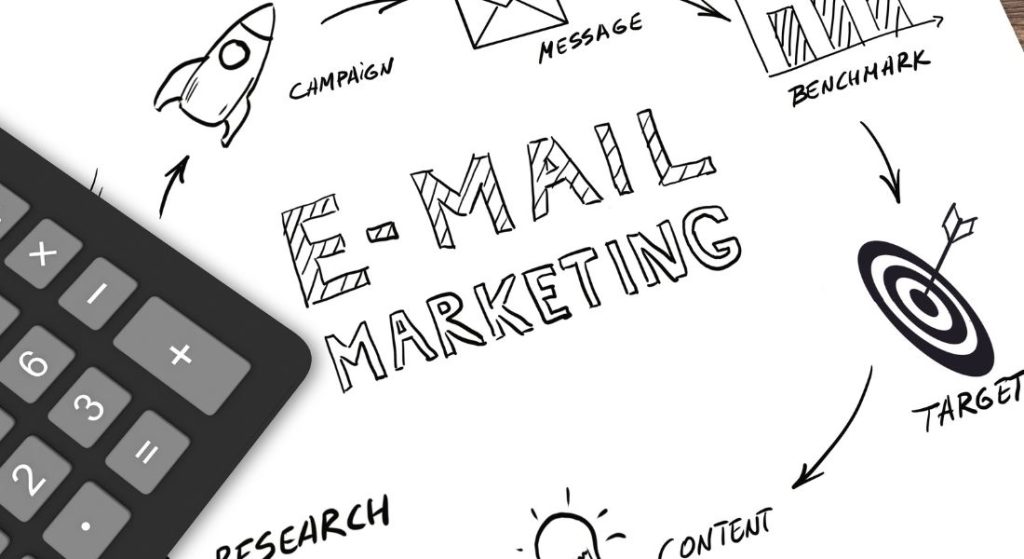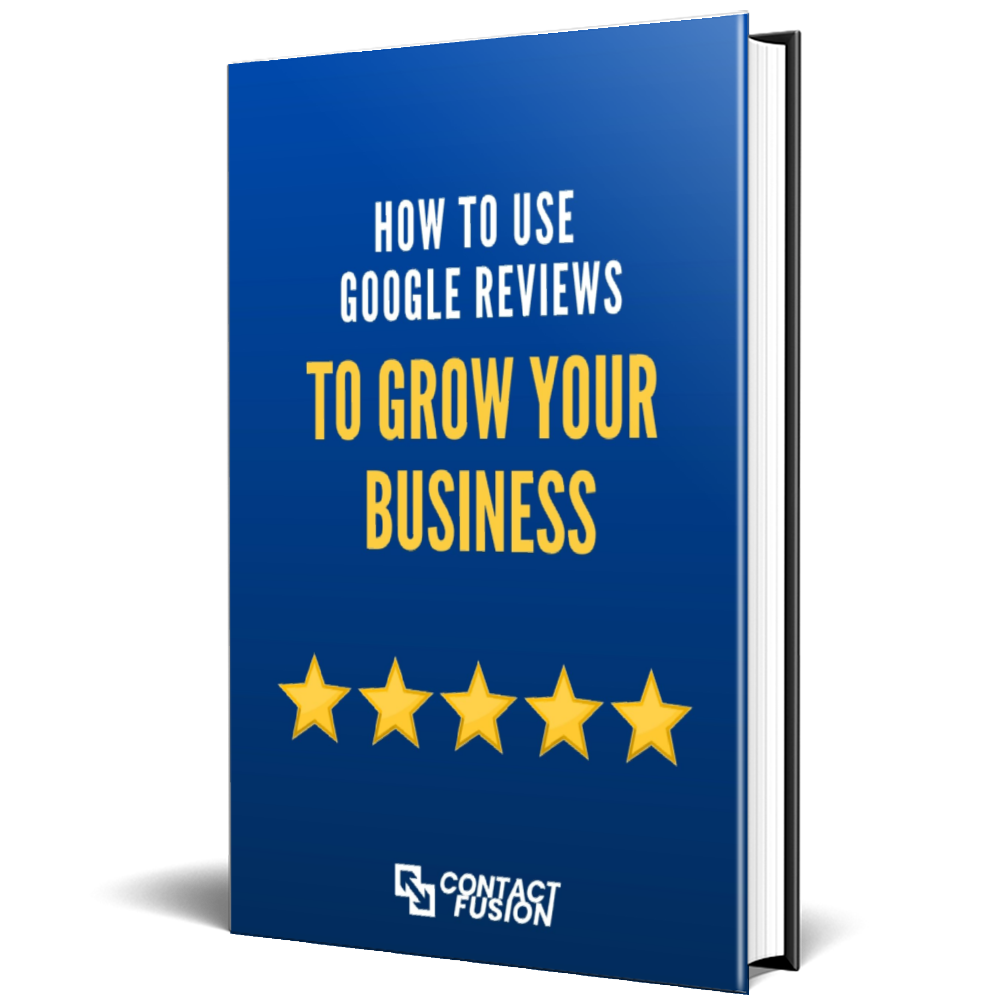The Ultimate Email Marketing Guide for 2023: Strategies to Grow Your Business
Picture this: You’ve just launched a fantastic new product that’s designed to make people’s lives easier and better. But how do you get the word out and generate buzz when there are thousands of similar businesses competing for attention?
Enter email marketing, a powerful and cost-effective tool that can help propel your business to new heights in 2023 and beyond! In fact, according to recent studies, email marketing can yield an average return of £42 for every £1 spent.
Intrigued? Then buckle up as we dive into the ultimate email marketing guide for 2023, filled with cutting-edge strategies to boost your reach, engagement, conversions, and ultimately – grow your business!
Our Email Marketing Guide 2023 is a comprehensive resource that covers the latest trends, strategies and best practises for running successful email marketing campaigns in 2023.
You will learn about advancements in technology such as AI, automation and personalisation, along with effective segmentation tactics and how to create engaging content.
This guide is designed to help you optimise your email marketing efforts and achieve better results in 2023.
Understanding Email Marketing
Email marketing is the practise of sending commercial messages to a group of people via email. It allows businesses to connect with their customers and prospects on a regular basis, in order to promote their products or services and build long-lasting relationships. Understanding email marketing is an essential step in creating a successful digital marketing strategy.
Imagine receiving an email from your favourite clothing brand announcing a new collection or a sale. This is a prime example of email marketing. By sending these emails, the brand is providing value to its subscribers and building rapport with them. As consumers receive more emails, they begin to trust the brand and are more likely to become loyal customers over time.
One of the main advantages of email marketing is that it has a high return on investment (ROI). According to HubSpot, for every $1 spent on email marketing, companies can expect an average ROI of $42! This is because email marketing allows for personalised communication with subscribers, making it more effective than other forms of traditional digital marketing.
Think of email marketing as planting seeds for future success. The seeds take time to grow – but with consistent nurturing and attention, they will eventually blossom into beautiful flowers. Similarly, sending regular emails to your subscribers takes time and effort, but it pays off in the long run.
The Role of Email Marketing in Business Growth
Email marketing plays a critical role in business growth by enabling businesses to stay connected with their customers and prospects. It helps create awareness about new products or services, increases website traffic, enhances customer engagement levels and boosts sales.
A local apparel store sends out weekly newsletters filled with updates on new arrivals, upcoming sales and outfit ideas. With each newsletter, they include links back to their site allowing visitors to purchase items directly online. This results in increased web traffic and revenue as subscribers become more likely to shop with them.
Email marketing is one of the most effective digital marketing strategies for driving conversions and revenue growth. In fact, according to a recent study by Epsilon, email marketing generates an average ROI of 122%! By delivering targeted content to specific segments of your email list, you can increase open rates, click-through rates and ultimately boost sales.
Some may argue that social media marketing is a more effective way to connect with customers and drive traffic. However, it’s important to note that social media algorithms are constantly changing, making it difficult for businesses to reach their target audience. Meanwhile, with email marketing, businesses have complete control over their list and can segment it in ways that ensure the right people receive the right message at the right time.
Understanding Email Marketing Principles
Email marketing is a highly effective digital marketing strategy that allows businesses to stay connected with their customers and drive revenue growth.
By delivering targeted content to specific segments of your email list, you can increase open rates, click-through rates and ultimately boost sales. While social media marketing has its place, it’s important to note that email marketing provides businesses with complete control over their list and can segment it in ways that ensure the right people receive the right message at the right time.
Building and maintaining your email list is crucial to maximising its potential and reaping the benefits of this powerful form of marketing.
Do you need help with your Email Marketing?
Building and Maintaining Your Email List
Building a high-quality email list is the foundation of any successful email marketing campaign. The more targeted and engaged your email list, the higher the chance of conversions and revenue. However, building a strong email list requires diligence, strategy, and commitment. Let’s dive into the key aspects of building and maintaining an effective email list.
One effective way to build your email list is through in-person events. For example, if you’re a fitness coach, you can host a free boot camp class or seminar for your target audience. You can use sign-up sheets or QR codes to capture attendees’ email addresses. By providing value to your potential clients first, you lay the groundwork for establishing trust and credibility.
Another important element of building an email list is creating valuable lead magnets that provide something of value to potential subscribers in exchange for their contact information. Examples of lead magnets include e-books, whitepapers, webinars, exclusive discounts, etc. The lead magnet should be relevant to your target audience’s interests and pain points.
Think of your email list as a garden that requires consistent pruning and watering. Just like a garden cannot grow without regular care and attention, an email list cannot thrive without regular cleaning to ensure it remains healthy and active. Caring for your email list means regularly cleaning out inactive and bouncing contacts while adding new subscribers who are genuinely interested in your content.
Now that we’ve covered some strategies for building an effective email list let’s dive into how you can maintain its health with proper opt-in strategies and list hygiene practises.

Opt-in Strategies and List Hygiene
Opt-in strategies refer to the methods used to obtain permission from individuals to add them to your email database. An effective opt-in strategy ensures that your emailing practises are ethical, legal, and aligned with the recipient’s interests. Your email list should only include subscribers who have given you explicit permission to contact them, either through an online sign-up form or offline event sign-up.
One common opt-in strategy is providing a checkbox option on your website’s sign-up form that requires potential subscribers to agree explicitly to receiving promotional emails from your business. Giving subscribers clear options to choose from allows them to indicate their preferences and ensures that they are comfortable with receiving emails from your brand.
Regularly cleaning out inactive or bouncing emails from your list is crucial for maintaining its health. The higher the percentage of inactive and bouncing emails on your list, the greater the risk of being marked as spam by Internet Service Providers (ISPs). Implementing an automated suppression system can help streamline the process of identifying inactive contacts and remove them from your list.
While it may be tempting to purchase email lists or scrape contacts from other websites and social media platforms, avoid doing so at all costs. Acquiring email addresses without explicit consent is considered spamming, violates privacy laws, and could lead to legal action against your business. Furthermore, these contacts are typically not relevant or genuinely interested in your content, leading to high unsubscribe rates and low engagement levels.
Now that we’ve covered the importance of opt-in strategies and list hygiene practises let’s explore how you can craft effective email campaigns that resonate with your subscribers.
Crafting Email Campaigns
Email campaigns are the backbone of any email marketing strategy. Creating an effective campaign requires more than just writing a catchy subject line and sending out a message to your subscribers. To craft a successful email campaign, you need to consider your audience, tailor your content, and optimise your structure for engagement. This section will cover some best practises in crafting email campaigns that get results.
First and foremost, it is crucial to segment your email list based on demographics, behaviours, interests, and interactions with previous emails. By doing so, you’ll send targeted messages that are personalised to the needs and preferences of each subscriber. For example, you might create separate lists for new subscribers or customers who haven’t purchased anything yet versus loyal customers who have purchased multiple times. By segmenting your list, you can create tailored content that speaks directly to each group and increase engagement.
Another key consideration is the content of your email. It’s essential to create emails that provide value to your subscribers and align with their interests. You can use blog posts, infographics, e-books, tutorials or guides related to your industry or niche as examples of valuable content. If the email seems like a sales pitch rather than an informative message to help them solve a problem or achieve a goal then it will negatively impact their engagement level with all future emails. A great way to test different types of content is through A/B testing.
One debate that often arises when creating email campaigns is whether to focus on the design or copy. While eye-catching design elements can certainly increase engagement rates by grabbing attention and enhancing brand recognition but at the same time well-crafted copy also plays an important role in conveying value statements and CTAs within an email text. Balancing both design & copy is therefore critical especially if your audience skews older considering many seniors often experience visual problems.
Think about your own email experience. Imagine if you receive an email with a beautiful, modern design, but the copy is generic and lacking in personalisation compared to another email that may look unspectacular but the level of rapport built between sender and receiver is much stronger thanks to genuinely personalised content.
Which one would you be more likely to engage with? The email whose design alone will not provide value or the one that has a well-crafted message along with good copy?
Now, that we have covered some best practises for crafting effective email campaigns let’s explore some techniques such as personalization, automation, and engagement in the next section.
Could your Email Marketing campaigns be performing better?
Personalisation, Automation, and Engagement
Personalisation is no longer optional in today’s world; customers are used to receiving direct messages that are tailored to their interests and behaviour patterns. Emails that offer personalised recommendations, promotions or discounts are shown to outperform generic messages by a significant margin. Using data segmentation, you can gather critical insights such as past purchase behaviour, browsing history or search activity so that you can provide relevant products/services. Automated emails triggered by different behaviours like abandoned carts or prior purchases also individualise your brand communication.
Building on this idea of personalisation- Email marketers can use Machine learning algorithms to determine the most optimal time for an email delivery based on previous customer visitation & purchase patterns as well as the day & time they are most likely to open an email based on historical data with regards to email opens.
Automated emails also improve customer engagement by providing timely follow-ups that include content specially tailored for each subscriber based on their preferences and behaviours. Such emails also go out automatically when specified events trigger them which means that any prospects who engage with every step of your message funnel will receive the pre-determined automated actions needed until they convert into readymade customers.

Email Automation is a Powerful Tool
Email Marketing Statistics in 2023
- According to Statista, global email users are projected to increase to 4.6 billion in 2025, up from 4.1 billion in 2020, indicating a strong continued growth of email as an essential channel for communication.
- A survey conducted by Litmus found that personalization (39%) and automation (32%) are considered the top email marketing tactics for high effectiveness and significant ROI in campaigns.
- Research by Campaign Monitor revealed that segmented campaigns can result in a 760% increase in revenue, emphasising the importance of targeted and focused strategies in email marketing.
The next section will cover analysing performance metrics such as improving email deliverability rates and open rates to quantify the impact of aforementioned strategies on ROI & results.
Analysing Performance Metrics
Analysing performance metrics is an essential step to measure the success of your email marketing efforts. This process involves evaluating different data points that can help you understand how well your campaigns are performing and identify areas for improvement. By examining these metrics, you can gain insights into what works and what doesn’t in your email marketing strategy, which will ultimately lead to better outcomes.
One of the most critical metrics to track is the open rate, which indicates the percentage of recipients who opened your email. A high open rate typically means that your subject line was compelling, and recipients found your content relevant and engaging. On the other hand, a low open rate could indicate that your subject line requires optimisation, or your content needs improvements.
Click-through rate (CTR) is another crucial metric that measures how many recipients clicked on the links included in your email. A high CTR is an indication that your content resonated with your audience, resulting in engagement and potentially generating leads or sales. In contrast, a low CTR may indicate ineffective content, poor placement of links, or unoptimized call-to-action buttons.
While open rates and CTRs are valuable metrics to measure email campaign success, they should not be used in isolation. Conversion rate (CR) should also be considered when analysing performance metrics since it measures how many recipients took action after clicking through to the website from the email campaign. Ultimately, conversions generate revenue and contribute to business growth.
Think of conversion rate as a basketball player’s shooting percentage – a critical metric that measures how efficient they are at scoring points based on their shots taken. In the same way, conversion rate measures how effective you are at converting leads into customers based on clicks made from their emails.
Do you need help with your Email Marketing?
Improving Email Deliverability and Open Rates
Email deliverability is the ability to land an email in a recipient’s inbox. It’s crucial to ensure high deliverability rates as emails that do not reach the inbox fall under the category of bounces or go directly to spam, causing your email marketing strategy’s failure. Furthermore, if your audience doesn’t see your emails in their inbox, they can’t engage with your content or take any action on your website.
When it comes to open rates, email subject lines play a critical role in getting users to open your emails. A well-crafted subject line will grab the recipient’s attention and entice them to read further, leading to improved open rates. Examples of effective subject lines may include personalised greetings, catchy phrases, and teaser content that piques curiosity.
Another key consideration when trying to improve email deliverability is managing bounces and unengaged subscribers. Bounces occur when an email cannot be delivered to a recipient’s mailbox for some reason. High bounce rates could hurt your sender reputation and lead to poor email deliverability in the future. Similarly, unengaged subscribers who haven’t opened or clicked on any emails for several months could signal inactive accounts or non-existent addresses resulting from typos at sign-up. Regularly removing these recipients from your email list will not only reduce bounce rates and keep a clean list but also assist with improving engagement metrics such as open and click-through rates.
Another crucial factor that influences email deliverability is sender reputation. Sender reputation matters because internet service providers (ISPs) use it as one of several criteria for assessing whether an email is spam or not. Low sender reputation can result from sending out too many emails in a certain period, having too many bounces or complaints, poor list hygiene practises etc., triggering ISPs’ spam filters and negatively affecting delivery rates.
Think of email deliverability as a quarterback’s passing accuracy – a critical metric that determines whether a player can effectively pass the ball to their teammates. In the same way, high email deliverability rates ensure your emails reach your subscribers’ inboxes and avoid being “thrown out” by email service providers.

Common Questions and Responses
How important is personalisation in email marketing in 2023?
Personalisation in email marketing is more important than ever in 2023. It allows businesses to make a deeper connection with their audience by tailoring messages to their individual interests, needs, and behaviours.
According to a study by Segment, 71% of consumers feel frustrated when a shopping experience is impersonal. Meanwhile, personalised emails have shown to increase open rates by 29%, click-through rates by 41%, and revenue per recipient by 760%. These impressive numbers demonstrate just how effective personalisation can be when implemented correctly.
In addition, technology has advanced in recent years and made personalisation more accessible and easier for businesses. For example, artificial intelligence tools can analyse customer data and behaviour to send automated personalised emails that are highly relevant and timely.
Overall, personalisation in email marketing is no longer just an option or a recommendation; it’s a necessity. Businesses that invest in personalisation will see better results in their email campaigns and improve customer satisfaction.
What are some effective ways to increase email open rates in 2023?
In 2023, there are some proven ways to increase email open rates. Firstly, it’s important to send emails during certain times of the day when people are most likely to be checking their inboxes. A recent study by HubSpot found that the best times to send out emails were between 10 am and 12 pm and 2 pm and 4 pm.
Another effective way to increase email open rates is by personalising the subject line and content. According to a survey by Aberdeen Group, personalised emails improve click-through rates by 14% and conversion rates by 10%. This proves that customers value personalised content tailored specifically to their interests.
Moreover, crafting a catchy and engaging subject line is crucial since it’s the primary thing your recipient sees before deciding whether or not to read your email. A report from Campaign Monitor stated that subject lines with emoji had a unique open rate significantly higher than those without any emoji.
Overall, marketers must adopt a holistic approach towards email marketing campaigns by crafting personalised, compelling content delivered at the right time through appealing subject lines with or without emoji— resulting in significantly higher email open rates and better customer engagement.
How has GDPR affected email marketing in 2023?
GDPR or General Data Protection Regulation has been a game-changer for email marketing since it came into force in May 2018. Fast forward to 2023, and GDPR has had a lasting impact on the email marketing landscape.
Firstly, GDPR’s focus on obtaining explicit consent from subscribers has continued to influence email marketing strategies. Marketers know that they must obtain consent explicitly, clearly and unambiguously from their subscribers before sending any sort of promotional emails.
Secondly, GDPR has aided in establishing trust between marketers and their customers. Customers feel secure knowing that their data is being handled with care and will only be used for the intended purpose of the campaign they’ve signed up for.
Although some organisations may have seen short-term implications such as losing a portion of their email subscriber list in the process of complying with GDPR regulations, overall deliverability rates have increased significantly. According to Validity’s “Global Benchmark Report,” in 2022, companies that comply with GDPR levels had an average inbox placement rate of 84%, compared to just 69% for non-compliant companies.
In conclusion, while there are still challenges for marketers when it comes to following GDPR compliance regulations, focusing on building relationships through transparency can lead to long-lasting gains and overall healthier business practises.
What role do artificial intelligence and machine learning play in email marketing in 2023?
Artificial intelligence (AI) and machine learning (ML) have revolutionised email marketing in 2023, providing marketers with the ability to personalise their campaigns, improve segmentation, and increase customer engagement.
One of the most significant benefits of AI and ML is their ability to analyse large amounts of data quickly. This allows marketers to segment their email lists based on demographics, behaviour, and preferences, resulting in more targeted and relevant messaging. According to a study by Campaign Monitor, segmented email campaigns have a 14.32% higher open rate than non-segmented ones.
Another way AI and ML are used in email marketing is through predictive analytics. By analysing past behaviours and purchases, these technologies can predict what products or services individual customers might be interested in, allowing marketers to send tailored recommendations. A report by Salesforce found that personalised product recommendations can increase revenue by up to 29%.
Additionally, AI-powered chatbots have become increasingly popular in customer service for businesses. These chatbots are becoming more intelligent over time thanks to machine learning algorithms that allow them to adapt on their own without human intervention. This means that they can deal with a variety of customer queries automatically via email or chat rapidly.
In conclusion, AI and ML play fundamental roles in email marketing in 2023 as they enable more effective segmentation, personalisation, and prediction capabilities leading towards better customer engagement. Therefore, it has become essential for any business intending to grow its customer base ultimately to start using such innovative technologies to create targeted marketing campaigns that meet their customers’ actual needs.
What are the top email marketing platforms for 2023?
In 2023, there are numerous email marketing platforms available to businesses. However, some have proven to be more effective in terms of user-friendliness, affordability, and generating high conversion rates.
Firstly, Mailchimp continues to be one of the most popular email marketing platforms with over 16 million users globally. The platform offers a variety of templates, integrations with other tools and social media platforms, and affordable pricing plans for small businesses. Additionally, its AI-powered analytics feature enables businesses to send more targeted emails that achieve better results.
Another top email marketing platform is HubSpot. This platform combines email marketing with a suite of other inbound marketing tools such as CRM and marketing automation to create efficient campaigns. Hubspot’s user-friendly interface and advanced reporting options make it an excellent choice for businesses looking to grow their customer base.
Klaviyo is another platform worth mentioning. Known for being an e-commerce-focused email marketing tool, Klaviyo boasts impressive conversion rates. Businesses can personalise email content based on customers’ buying behaviour and preferences, leading to higher engagement and more sales.
Finally, Constant Contact offers advanced features such as A/B testing and automatic resend to non-openers at an affordable price point for small businesses. Their integration with third-party apps also makes it easy for businesses to connect their other systems within their email campaigns.
To sum up, while there are numerous email marketing platforms available in 2023, Mailchimp, HubSpot, Klaviyo, and Constant Contact stand out due to their unique features that cater to a range of business needs. By selecting a suitable platform that meets your business requirements, you can take your email campaigns a step ahead in driving traffic and boosting conversions.



Resources to help you grow your business faster.
How To Use Google Reviews To Grow Your Business
A comprehensive guide that shows you how to get the best results from Google Reviews. You will learn:
- What Google Reviews are and how they impact your business.
- How to ensure that your business is standing out, being found and chosen through Google Reviews.
- Tips on how you can collect more Google Reviews.
- How you can effectively manage your reviews.
- The best way to consistently send out review requests to your customers.


